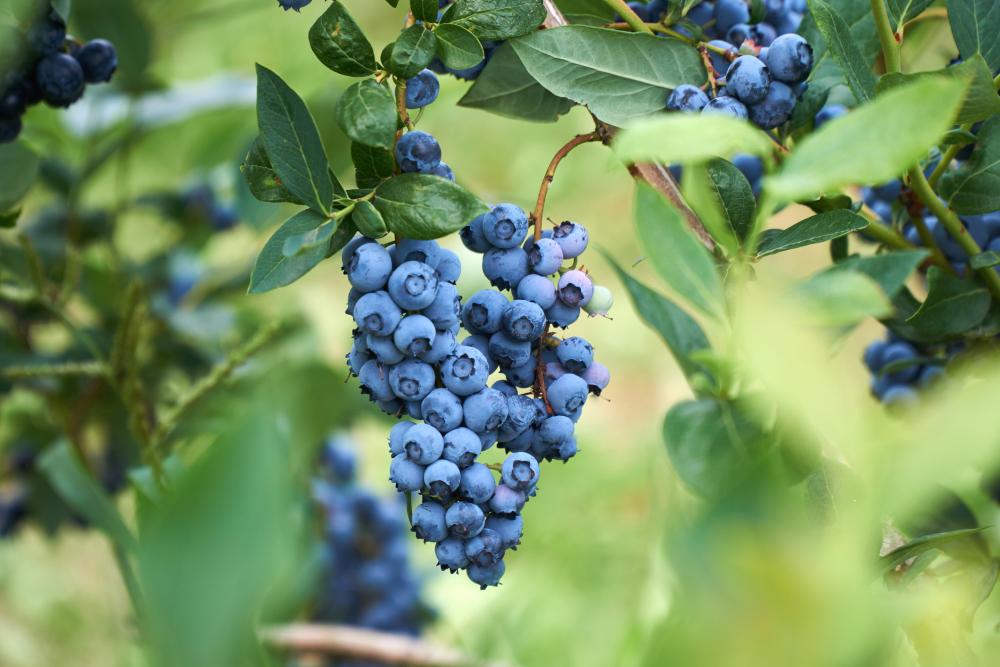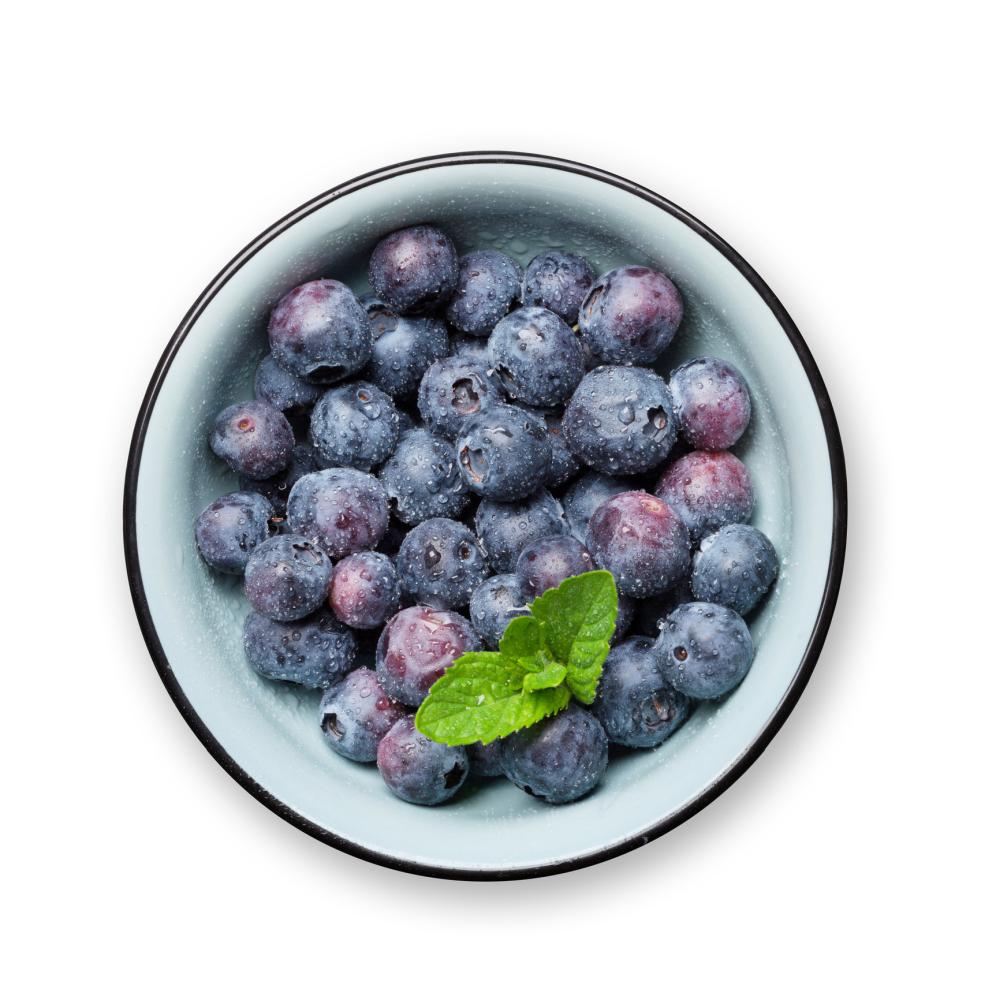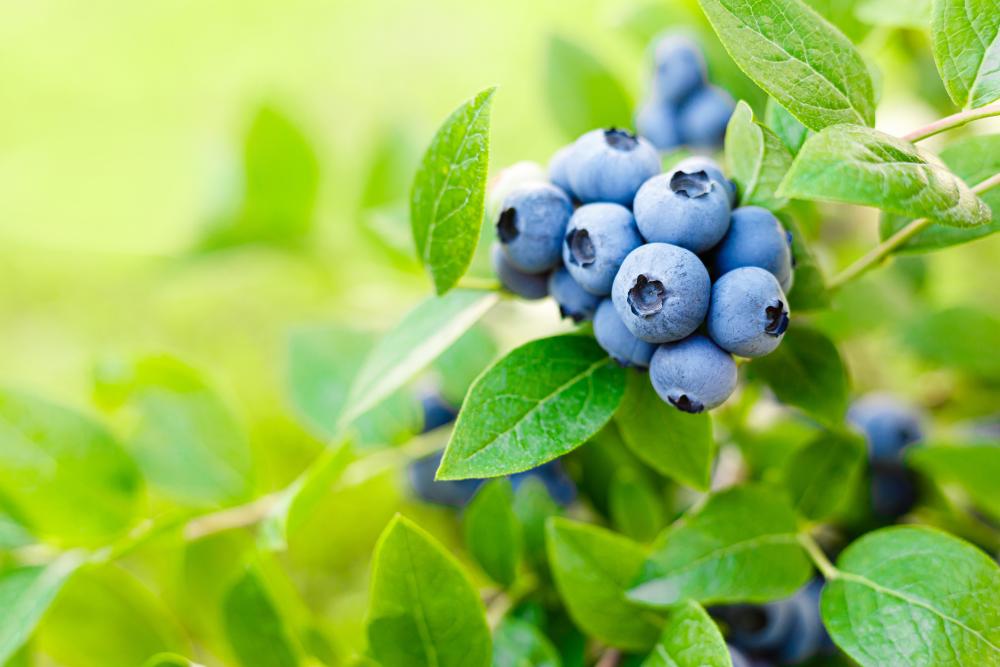Top 8 Blueberry Varieties To Grow At Home
Whether you eat blueberries for their health benefits or unique taste, one thing is for sure: they taste better when they’re fresh. The plump little berry with the powdery skin and firm texture has a lot of nutrients. And the best way to eat it fresh is of course if you grow it in your garden.
But which variety to grow? That seems to be the most asked question. Not just about blueberries but other fruits and veggies as well. With so many blueberry varieties on offer, it can be confusing to find the right variety for you. To make things more complicated, blueberry bushes look very similar to each other but have a large spectrum when it comes to taste and fruiting habits.
So to make things easier for you, we compiled this list of the top 8 popular blueberry varieties to grow in your garden. After reading this article you’ll be able to make an educated choice based on your zone and growing conditions.
Sunshine Blue
One of the first questions you need to ask yourself when choosing a good blueberry variety is can you grow it in a pot? It’s not enough to pick a blueberry bush that grows in your zone and is acclimatized to your specific growing conditions. You also need to be able to pot the bush and move it indoors if the weather proves to be less than clement.
Sunshine Blue is a good cultivar for both potting and planting in the garden. It is hardy to zones 6 to 9 and has great ornamental qualities. Besides its vibrant blue berries, it has lush green foliage which shimmers in the sun. As for the flowers, they’re pink and gorgeous.
The average bush grows to about 4 feet tall and spreads 3 feet wide. If you plant it in a large container, you can keep the bush happy without getting root bound. When the blueberries are fully developed, the foliage turns red and the whole bush becomes a spectacular feast of colors. Pollinators love to flock to the bush during the growing season, so it’s a useful plant to grow around veggies and fruit trees.
Pink Icing
You know you’re going to have exciting visual and culinary experiences when your blueberry variety is called Pink Icing. And it’s the leaves of the bush that lend it its name rather than the berries. The berries of the Pink Icing turn blue when ripe just like most other blueberry varieties.
While the leaves start as light green, they soon start displaying different shades of pink and red as the summer heat picks up. In the winter, the leaves turn back to more subdued shades of turquoise and blue-green.
The bush is hardy to zones 5 to 11 which makes this one of the more popular blueberry varieties in North America. The fully-grown Pink Icing bush reaches 4 feet tall with ease and spreads to about 5 feet wide. You can prune it and keep it compact. In which case you can easily grow it in a large container.
This allows you to move the pot into a sunny spot to get the most out of the color shows it puts on throughout the year. And while the berries of the bush are of average size, they tend to have strong flavors that stay on the tongue for a long time.
Bluecrop
The large size of the Bluecrop bush makes it unsuitable for growing in pots. It towers over 6 feet tall which is gigantic by blueberry bush standards. However, the bush has a remarkable tolerance for cold weather that makes it ideal to grow in the garden and not worry about it during the cold winter months.
Hardy to zones 4 to 7, this cultivar actually needs more chill hours for the berries to ripen and acquire deep and rich flavors. And besides its tall stature, the bush spreads about 6 feet in all directions. This means you have to give it plenty of space to allow it to grow. It’s not suitable for a small corner in your backyard. It needs to be the centerpiece in your garden.
And with such a large bush come equally large berries. The blueberries of the Bluecrop are dark blue when ripe and larger in size than the average blueberry. They’re also packed with flavors and are more sweet than tarty.
If you go to an upscale grocery store and look for large-size blueberries, chances are you’ll find Bluecrop. Both commercial growers and gardeners like it because it’s easy to grow, has a high yield, and doesn’t require much maintenance and care.
Top Hat
If there’s one thing that distinguishes the Top Hat blueberry, it’s the compact size of the bush. But if you look closer, you’ll notice that the cultivar tries to dazzle with a modest display of colors of its own. While the leaves stay bright green throughout the spring and summer, they provide a lush background to the dark blue ripe berries. In the fall, the leaves turn different shades of yellow and brown.
You can think of the Top Hat as an ornamental plant that you can grow just about anywhere. It fits snugly into small spaces since it doesn’t grow above 24 inches high and is 2 feet across. With the right care, it can remain compact and manageable.
The cultivar was developed by Michigan State University to suit the colder zones. And it does a superb job tolerating the weather conditions in zones 4 to 7. And to add to its decorative properties, the bush produces small white flowers. In fact, there’s a lot more to be said about this bush’s ornamental values than its berries.
The blueberries that you harvest every season are of average quality. They’re less than average in size and the yield is not that impressive. So it’s easy to imagine that the Top Hat is not favored by commercial blueberry growers.
Lowbush Blueberry
What the Lowbush Blueberry lacks in height, it makes up for in yield and berry flavors. A native of North America, this variety is hardy to zones 2 to 6. It tolerates cold winters and frost, far from impeding the ripening of the berries, gives them their famous flavors.
Now you might expect a bush that grows only to 24 inches high and two feet across to have small berries. And you’d be right to assume that. The berries are tiny compared to large varieties such as the Bluecrop.
However, good things come in smaller packages. And the Lowbush has sweet berries to swear by. In addition, each bush becomes laden with blueberries that after you harvest it, you won’t need to buy blueberries at the grocery store again.
The berries are bright blue when fully ripe and the foliage is lush green. It’s the right combination for your landscape if you happen to care about the visual aspects of the bush more than its berries. It also can tolerate partial shade and dappled light, so you can grow it in just about any part of the garden.
With its small and compact size, the Lowbush is an excellent candidate as a potted plant. You can grow two bushes for every person in the house and stock up on delicious blueberries all year round.
Brightwell
If you’re looking for a large blueberry variety that spreads upwards and across and acts more like a small tree than a bush, then the Brightwell is the variety for you. But it’s not the size of the Brightwell that endears it to the hearts of blueberry growers of all walks of life. It’s mainly the yield that makes it a favorite. After all, who wouldn’t like to have a good harvest of blueberries at the end of the season?
Towering over 10 feet tall and 9 feet across, the Brightwell impresses in more ways than one. You can grow it as a hedge bush and create impressive lines around the borders. It also has a bright canopy that gets dotted with beautiful flowers then dark blue berries as the season draws to a close.
The berries are larger than the average blueberry variety and grow in large and dense clusters. Commercially, it’s a very productive variety and if you grow it at home, then one or two bushes will be enough for the whole household.
Hairy-Fruited Blueberry
While the name might be off-putting (hairs and berries rarely produce good results in the mouth), the Hairy-Fruited blueberry is quite the exotic variety. In fact, the bush has plenty of surprises waiting to unfold in your garden as the plant matures.
The first of those surprises are the elliptical leaves. They’re light green and long compared to other varieties. And since it barely reaches 26 inches high, it’s a compact plant that grows well in pots as well as in the garden. Its spread is also manageable since it grows to a little over one foot across.
The second surprise is the hairy fruits. Under the fine hairs that cover the skin of the berry, the ripe blueberry is actually black. Again, these are not the most palatable berries you can grow, but in the right setting, the bush shines as an exotic plant. Grow it along a pine tree to create a stunning landscape
Native to Georgia and Tennessee, the Hairy-Fruited blueberry is hardy to zones 6 to 9. Not surprisingly, it’s not a popular choice outside of these parts of the country. And if you haven’t come across the Hairy-Fruited blueberries in the fresh produce aisle of the supermarket, that’s because commercial growers don’t find its low yield or hairy berries economically viable. They usually prefer Bluecrop and Brightwell varieties.
Rabbit-Eye Blueberry
A native of Southeastern USA, this blueberry variety is average in just about any way you look at it. It doesn’t grow an inch about 6 feet tall although it can stay compact at 3 feet tall with regular pruning. As for its spread, it usually will cover an area of about 3 feet across.
But then the Rabbit-Eye blueberry would surprise you sometimes with delicate-looking flowers shaped like bells. Then your plain bush is no longer plain with its magical beauty. However the flowers don’t stay in bloom for long and after pollination, the medium-sized berries develop out of the female flowers.
As the berries ripen, they get the usual dark blue color but a thick powder coating turns them grayish or almost white. They usually spread across the length of the branches and dangle at the end of small stems rather than growing in clusters. This can make harvesting the Rabbit-Eye a daunting task since you need to push the leaves aside to look for berries hidden in the depth of the bush’s foliage.
Hardy to zones 5 to 10, the mature bush averages between one to four feet tall with a similar spread to its height.



